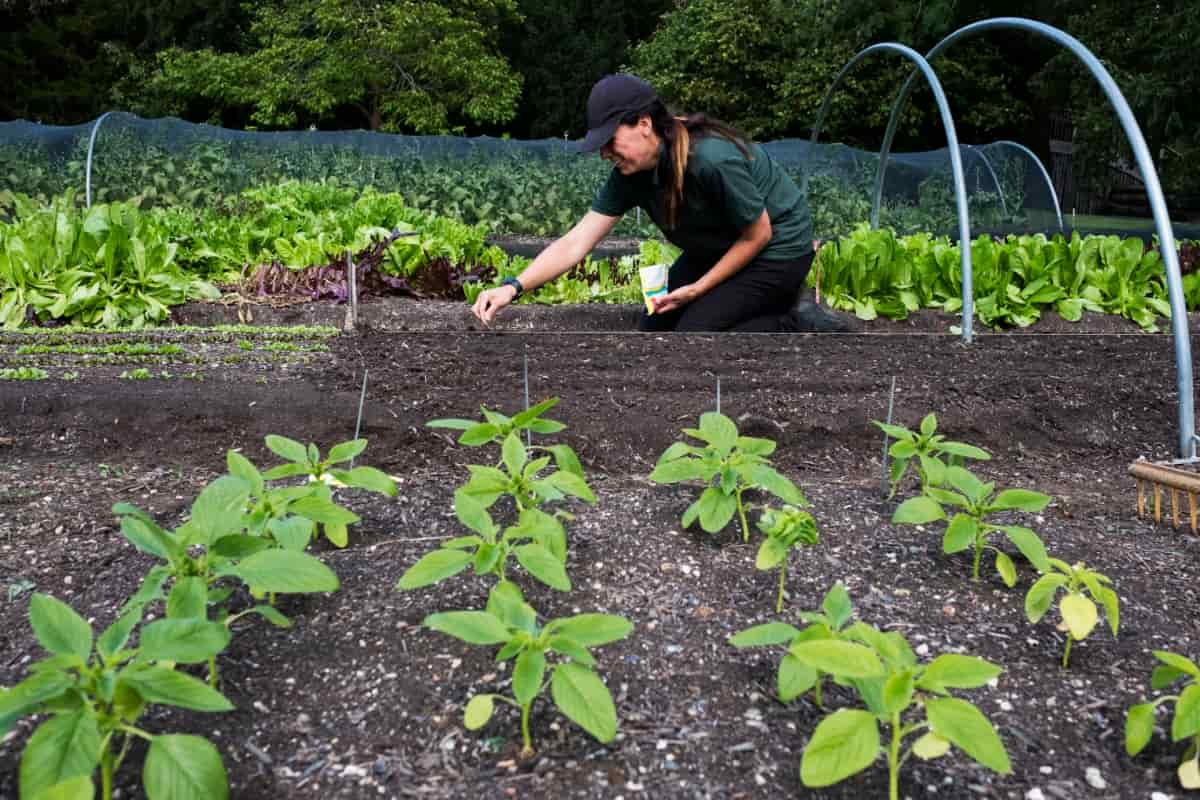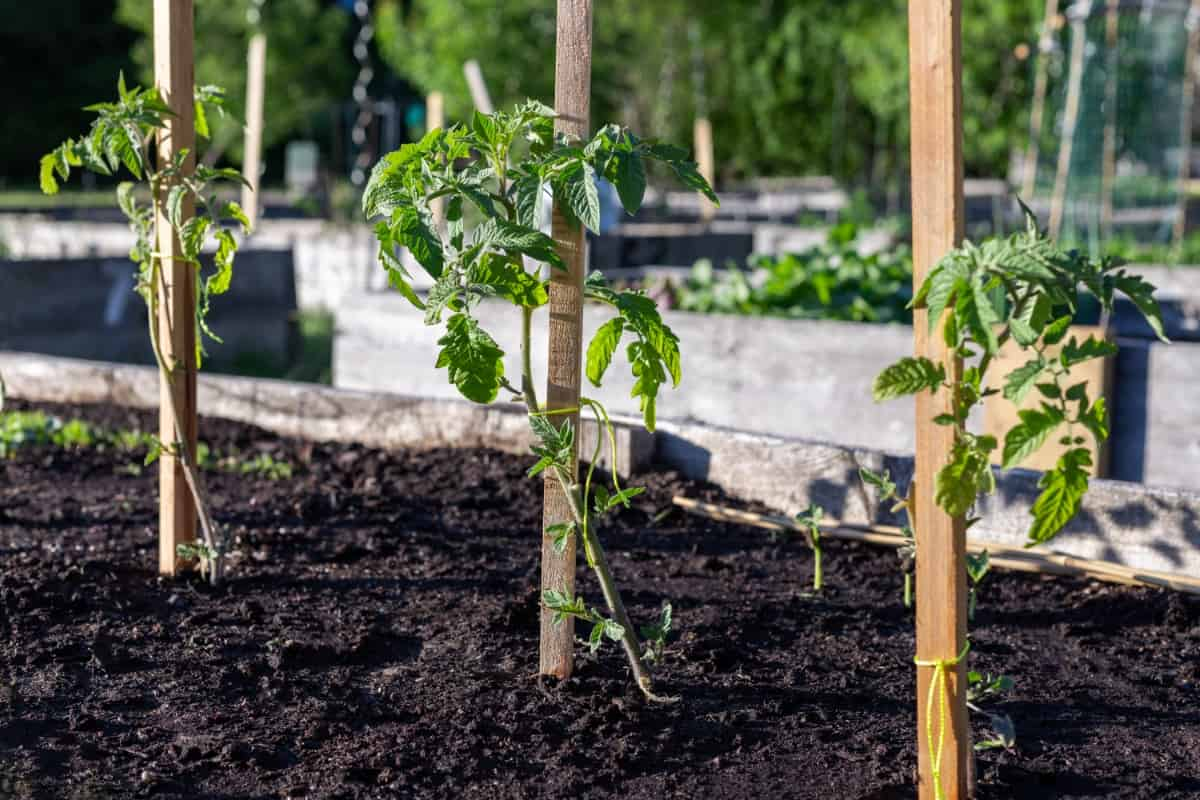You can become more self-sufficient by taking control of your food supply by growing your vegetables. Growing food can seem daunting to someone who has never done it before. Many things can go wrong, so there is a lot to learn. Seeds or plants can be planted immediately when you are enthusiastic, but planning is the key to good harvests.

You can gain a great deal of satisfaction and enjoyment from starting a garden, as well as developing a vast library of horticultural knowledge. You should know and consider several aspects of gardening before creating your first planting bed to be a successful and efficient gardener. Below are the steps for preparing a planting bed for a vegetable garden.
How to Prepare a Vegetable Garden Planting Beds
Choose Your Plot
Choosing a location for the vegetable garden is the first major decision. Find a sunny spot. Sunlight for over 8 hours per day is ideal for most vegetables. Consider growing herbs and greens, like lettuce and spinach, rather than crops that need this much sun. You should avoid low-lying areas.
Plants need oxygen at their roots, and vegetables are particularly vulnerable to submersion. Vegetable gardens should not be located in places where rainwater accumulates. Make sure you consider convenience. Consider an easy-to-get-to location with easy access to irrigation water if you have many spots to choose from.
Choose Your Garden Format
The raised-bed garden utilizes elevated frames to define a manageable, small space. It involves more labor and expense up front, but it works well when the existing soil is unsuitable for gardening. In-ground gardens work well in soil suitable for gardening, are less expensive to get started, and can be moved easily if necessary. Getting started with in-ground gardens is the focus of the rest of this fact sheet.
Test the Soil
The best soil for a vegetable is a pH of 6.5-6.8. Soil tests will determine if the soil needs to be amended with nutrients and adjusted pH. The soil test results will tell you:
- Soil pH
- Levels of potassium (K), phosphorus (P), calcium (Ca), magnesium (Mg), and sulfur (S)
- Level of organic matter
- Lead content
You can improve your soil by adding lime and fertilizer (organic or chemical) according to the results of a soil test. Typically, lime is used in the garden as an alkalizer to raise the pH factor and lower the soil’s acidity. In contrast, a soil test may reveal that your soil is too alkaline and requires calcium sulfate, which decreases pH. Acidic soils are found in humid and wet regions where organic matter decomposes slowly. In semiarid regions, near salt marshes, and where limestone underlies the rocks, alkaline soil is commonly found.
Amending the Soil
The soil needs to be amended based on the results of the test. Before planting, amend your garden soil because your vegetables use up a lot of soil nutrients after each growing season. Consequently, if you do not amend the soil, there will be fewer nutrients, and subsequent gardens will be less and less productive.
In case you missed it: Treating Dieback Disease in Neem Trees

Amending the soil also improves its structure. Adding certain organic and non-organic materials can help your soil retain moisture and nutrients, for instance, if it is sand-based. Adding organic and non-organic materials to clay soil can improve drainage and aeration.
Till the Plot Thoroughly and Remove the Weeds
With a shovel or spade, you can dig a small garden space by hand using the double-digging or French-intensive method, which is time-consuming and labor-intensive. Turning will bulk out the soil once you loosen it thoroughly. That’s fine, and it just means the soil is getting plenty of air.
At this time, you should eradicate all weeds. Remove the plant by the roots, or it will simply grow back. You will save time and effort in the long run by putting in a bit of elbow grease now. A walk-behind rototiller can be used instead, but it will be necessary to use it frequently to kill perennial weeds thoroughly (perhaps three times every 2-3 weeks).
Applying Mulch
Using mulch to kill weeds is based on the principle of starving them by preventing their access to light. The roots of perennial weeds and grasses tend to be extensive, and they have a good energy supply to help them regenerate. As a result, mulching requires a layer of mulch that completely blocks light and must be placed for some time before it can be removed. It is very easy to mulch using a heavy (6-mil or heavier) piece of black plastic weighted along the edges with rocks or sandbags.
Providing the plastic is UV-stabilized, it can be repeatedly reused for the same or other purposes. Newspaper, leaves, straw, wood chips, or any of a number of organic materials can also be used. Ideally, the layer should be thick enough to block light from reaching the plants below. Papers printed with colored ink and glossy papers should be avoided.
Set Stakes or Poles and Trellises for Tall Crops
You should set up support now if you plan to grow tomatoes, peas, pole beans, or other plants that require support. Waiting until your plants are in may disturb your vegetable roots before driving the stakes into the ground. A simple structure above tomatoes is recommended, covered with corrugated clear fiberglass panels or clear plastic sheeting. This will prevent tomato blight by keeping the rain off the tomato leaves.
In case you missed it: Frequently Asked Questions About Growing Artichoke from Seed to Harvest

Now that you have prepared your plot for planting, it is time to get started. Put the names of your plants on a small wooden stake and place them next to the plant if you might not remember them. In this way, you can remember their name if you need to find their optimal growing conditions. It is common for gardeners to keep a journal that maps their plants and layout every season.
Conclusion
Planting beds are home to a wide variety of plants, including vegetables. Your planting bed should be easy to construct and maintain so your plants can thrive. Garden planting beds should be created once in a lifetime with sweat equity. When you make a new bed, feed the soil-which will then feed the plants, and the bed will become an established bed that will produce for many years if you feed the soil.
- Feed Your Flock for Less: Top 10 Tips to Save on Chicken Feed
- Ultimate Guide to Ossabaw Island Hog: Breeding, Raising, Diet, and Care
- Hatching Answers: The Top 10 Reasons Your Chickens Aren’t Laying Eggs
- Eggs and Economics: Breaking Down the Cost of Raising Backyard Chickens
- Defend Your Greens: Proven Methods to Keep Iguanas Out of Your Garden
- Ultimate Guide to Cinnamon Queen Chicken: A Comprehensive Guide for Beginners
- Ultimate Guide to California Tan Chicken: Breeding, Raising, Diet, Egg-Production and Care
- Ultimate Guide to Marsh Daisy Chicken: Breeding, Raising, Diet, and Care
- 10 Types of Chicken Farming Businesses You Can Start for Profits